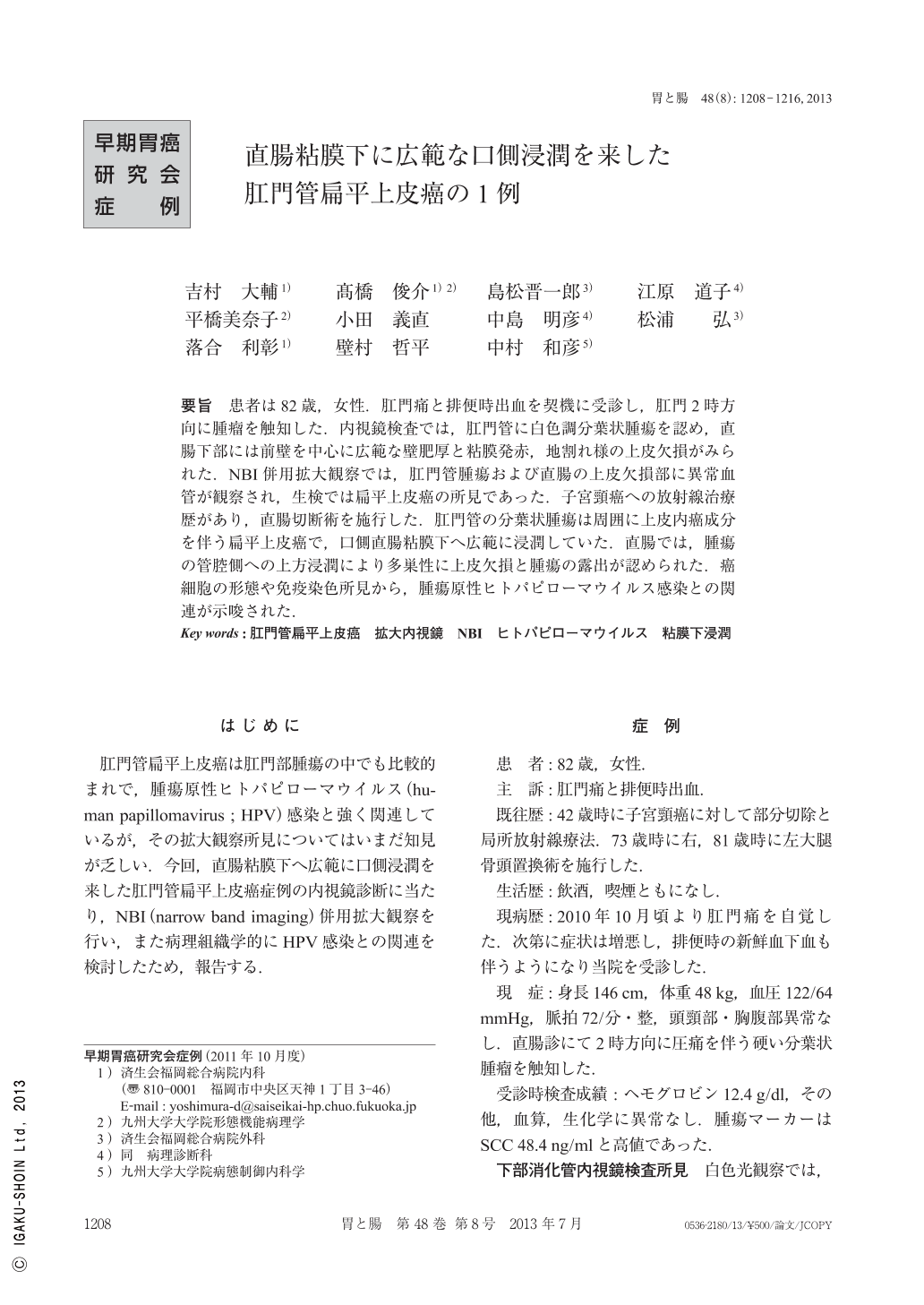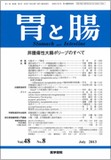Japanese
English
- 有料閲覧
- Abstract 文献概要
- 1ページ目 Look Inside
- 参考文献 Reference
- サイト内被引用 Cited by
要旨 患者は82歳,女性.肛門痛と排便時出血を契機に受診し,肛門2時方向に腫瘤を触知した.内視鏡検査では,肛門管に白色調分葉状腫瘍を認め,直腸下部には前壁を中心に広範な壁肥厚と粘膜発赤,地割れ様の上皮欠損がみられた.NBI併用拡大観察では,肛門管腫瘍および直腸の上皮欠損部に異常血管が観察され,生検では扁平上皮癌の所見であった.子宮頸癌への放射線治療歴があり,直腸切断術を施行した.肛門管の分葉状腫瘍は周囲に上皮内癌成分を伴う扁平上皮癌で,口側直腸粘膜下へ広範に浸潤していた.直腸では,腫瘍の管腔側への上方浸潤により多巣性に上皮欠損と腫瘍の露出が認められた.癌細胞の形態や免疫染色所見から,腫瘍原性ヒトパピローマウイルス感染との関連が示唆された.
An 82-year old woman suffering from anal pain and bleeding was referred to our hospital. Endoscopy revealed a white lobulated tumor on the anterior wall of the anal canal, and the tumor broadly involved the distal end of the rectum. The anterior wall of the rectum showed marked thickening, diffuse reddish mucosa, and multifocal epithelial defects in which small white nodules were observed. Magnifying endoscopic observation with NBI(narrow band imaging)was useful because the surface of both the anal canal tumor and the rectal white nodules in the mucosal epithelial defects showed irregularly dilated and aggregated microvessels, which resembled those of invasive esophageal cancer. Biopsy specimens from them showed squamous cell carcinoma. Surgical specimen revealed invasive squamous cell carcinoma of the anal canal, and the tumor diffusely involved in the submucosal portion of the rectum to the posterior wall of the vagina. The tumor also had invaded upwardly to the rectal mucosa, which caused scattering epithelial defects and exposure of the tumor itself. The anal canal tumor was surrounded by squamous cell carcinoma in situ with koilocytosis-like atypia. The patient had been treated for uterine cervical cancer(squamous cell carcinoma)40 years previously, thus these findings suggest that both of her metachronous cervical and anal canal cancers may be strongly related to oncogenic HPV(human papilloma virus)infection.

Copyright © 2013, Igaku-Shoin Ltd. All rights reserved.


